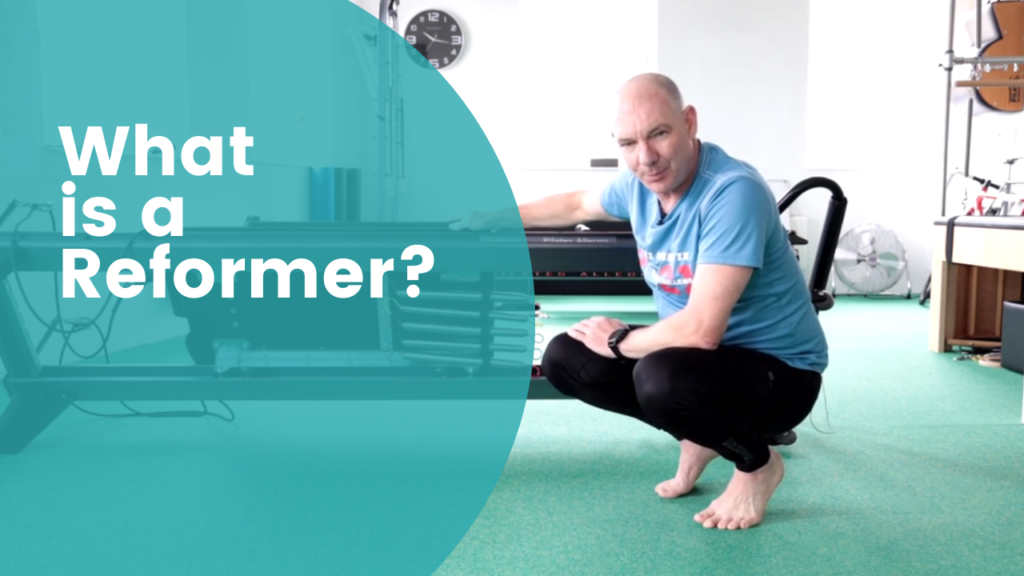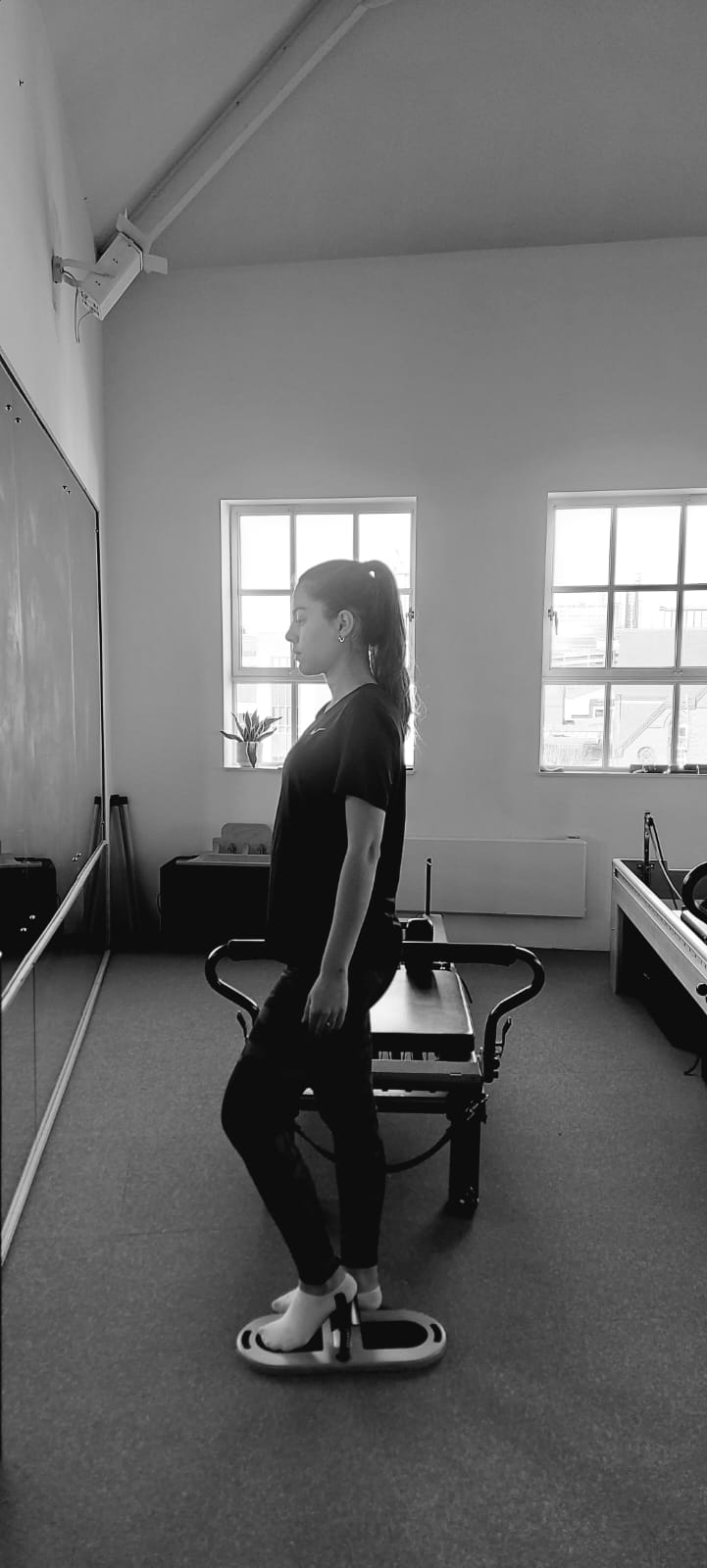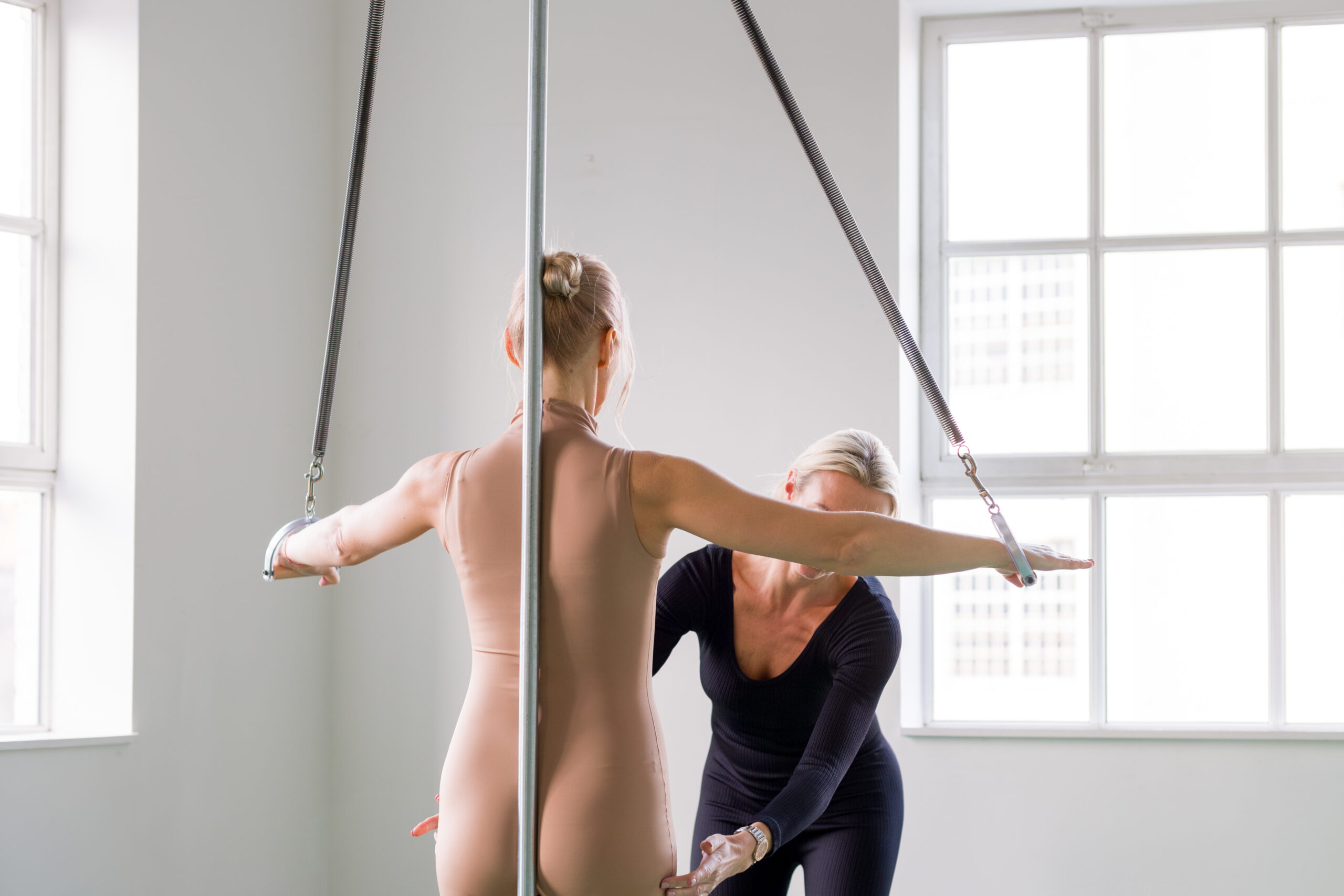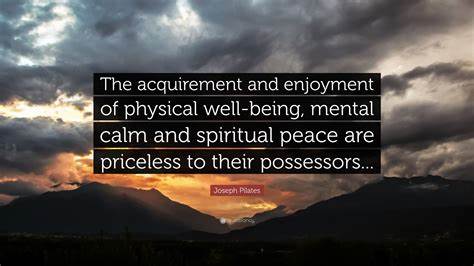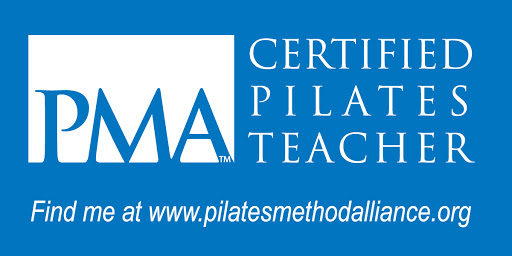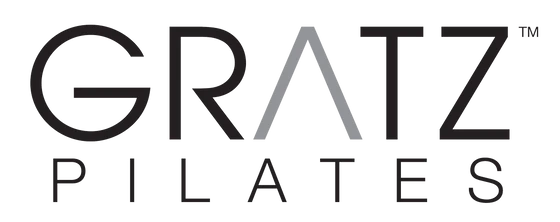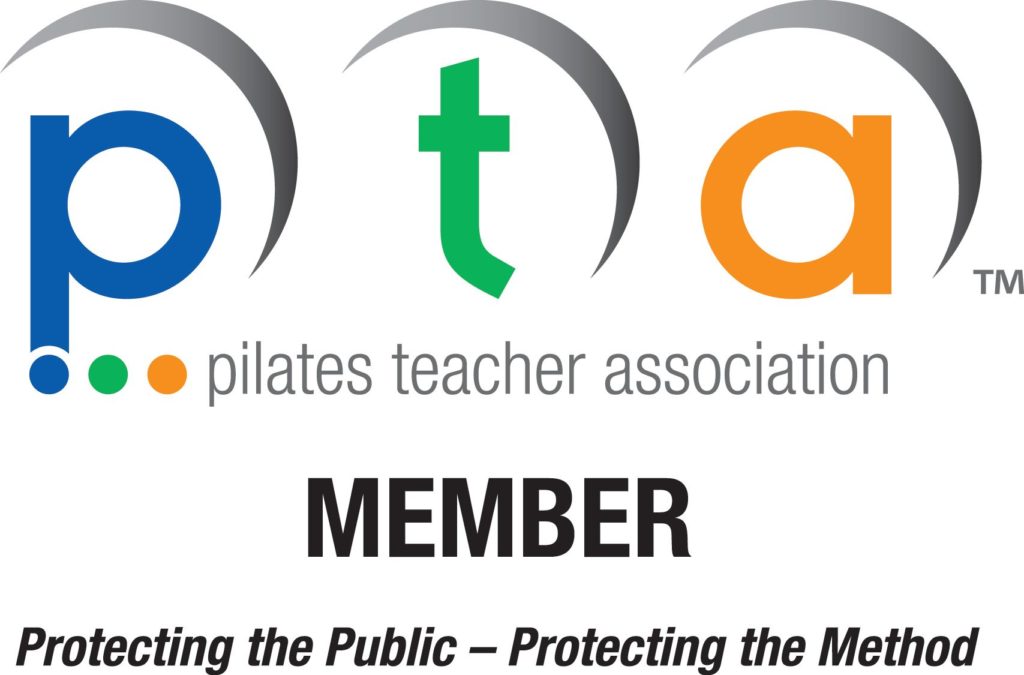What is a “Pilates Reformer”
Without any doubt, the Pilates Reformer, or “The Universal Reformer” to give it Joe Pilates’ original name, is the iconic apparatus in the Pilates world…
The Reformer consists of a simple wooden or metal frame and a moving carriage. This carriage has shoulder rests, a footbar, straps or ropes with handles or loops attached and springs.
All these parts can be adjusted to make exercises easier or more difficult and to change the Reformer to suit different body sizes, ages and abilities.
Most Reformers are wood or metal. Some Reformers rest on the floor and some have legs. But the most important distinction in design is between Classical and Contemporary Reformers. Contemporary designs have taken into account our deeper understandings of bio-mechanics and and physiology, whereas the classical manufacturers still follow closely the original blueprints of Joe Pilates. Some manufacturers produce both types. The primary manufacturer of Classical equipment is Gratz. In the UK, https://www.puristpilates.co.uk made the most beautiful classical equipment I have ever seen.
The Footbar end.
The footbar is also used as a support for the feet and hands as the carriage is pushed out. It can be raised and lowered and on some reformers can be moved backwards and forwards along the rails of the reformer. On Classical reformers the footbar has just two positions: up or down.
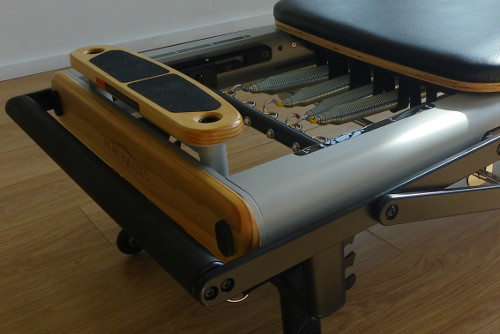
On Contemporary Reformers, alongside your own body weight, the springs provide the resistance. However, on Classical Reformers the wheels that support the carriage on the rails do not have precision bearings. Due to this, there is, more resistance to return the carriage back home. This is intentional and makes the Classical Reformers much harder work than the Contemporary ones.
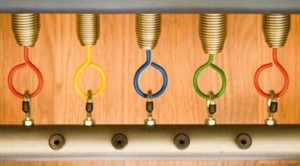
Each spring hooks into eyes which, attached to a bar, can be moved backwards and forwards providing more or less preload to the spring. This is called a gear system. It is also used to adapt the Reformer to people’s height if the carriage end stop is also moved to match the spring length. In this way distance to the footbar is changed, but the spring preload remains the same.
Classical Reformers have four springs of equal tension or weight. Contemporary Reformers have three or four different weights of springs which are colour coded for convenience.
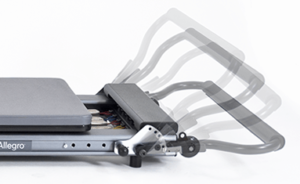
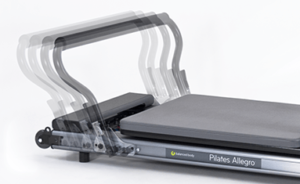
At first sight, the Reformer is a very simple device. Indeed it is, but this simplicity belies what you can do with it: there are literally hundreds of exercises that you can do with it.
The Carriage
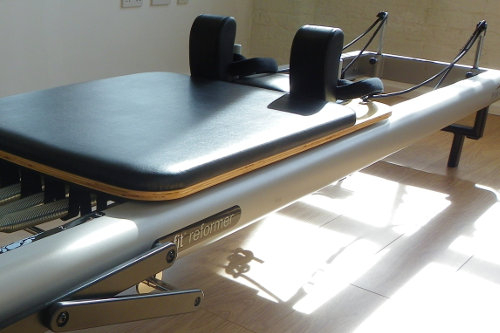 The padded carriage is where you will most often lie, sit, kneel or stand to do your exercises. Lying down, kneeling, sitting or standing are the positions from which we pull (and push!) the straps and push the footbar to make the carriage move against the resistance of the springs or the wheels. Nowadays, carriages are comfortably upholstered, but Joe Pilates simply covered his with artificial leather, with no padding!
The padded carriage is where you will most often lie, sit, kneel or stand to do your exercises. Lying down, kneeling, sitting or standing are the positions from which we pull (and push!) the straps and push the footbar to make the carriage move against the resistance of the springs or the wheels. Nowadays, carriages are comfortably upholstered, but Joe Pilates simply covered his with artificial leather, with no padding!
On Contemporary Reformers, alongside your own body weight, the springs provide the resistance. However, on Classical Reformers the wheels that support the carriage on the rails do not have precision bearings. Due to this, there is, more resistance to return the carriage back home. This is intentional and makes the Classical Reformers much harder work than the Contemporary ones.
Each spring is attached to the bottom of the carriage and then hooks into eyes at near the footbar. This footbar is attached to a bar which can be moved backwards and forwards providing more or less preload to the spring. This is called a gear system. It is also used to adapt the Reformer to people’s height if the carriage end stop is also moved to match the spring length. In this way distance to the footbar is changed, but the spring preload remains the same.
Headrest and Shoulder Blocks
The headrest can be raised or lowered to either accommodate different anatomical shapes of people or to accommodate the requirements of a particular exercise.
Predictably, the shoulder rests are found on either side of the headrest. These shoulder rests can be used to check your alignment on the carriage and to support the feet, knees or hands while doing various exercises.
The Straps and Handles
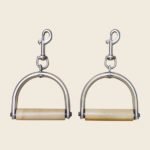
Contemporary designs feature two short and long loops, one inside the other for hand or feet use respectively. The ropes travel through the pulleys with very little resistance.
In classical designs, the straps have handles on the end that you can grasp to pull or push the carriage. To use the feet with the handles, the leather strap is threaded through the handle, leaving the handle on the outside of the legs.
The Risers/Pulleys Classical vs. Contemporary
In the classical design, the straps are made of leather and run through pulleys that are placed inside the top end of the Reformer, opposite the footbar. There is no possibility of adjustment of the height of the pulleys. This is significant as this low placement means that there is more downward push on the practitioner as she or he attempts to resist this downwards force. This is especially apparent in exercises that require sitting, kneeling or standing.
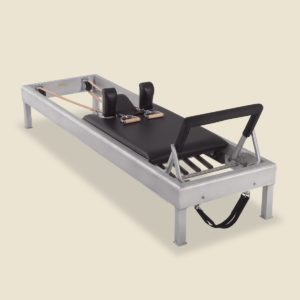
In contrast, contemporary designs have “risers” that elevate the pulleys thereby reducing this downwards force making these exercises significantly less challenging. Usually, these risers allow for height adjustment of the pulley – making the exercise more or less challenging.
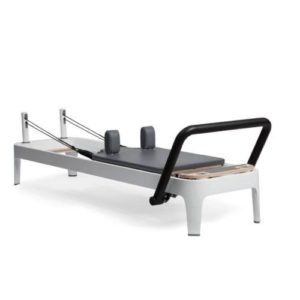
Accessories
Together with the Reformer, there are several accessories that further enhance the functionality of the apparatus.
The Sitting Box
The Box is an indispensable part of the Reformer. It is used to adapt certain exercises more accessible for beginners, to create new and novel exercises and is also used to create a platform for numerous exercises to be performed on. It can be used on the carriage both lengthwise or side ways “long box” and “side box” respectively.
The Pole
The (short) pole is used for several exercises to assist with alignment. It is very useful for shoulder mobilisation exercises.
The Sticky Pads
Are important to prevent slippage when using the box in it’s long position. They are also useful to make people feel more secure if they happen to perspire in hot weather or due to exertion.
The Cushions
Cushions are used to provide feedback with alignment for exercises that require a neutral pelvic position to be maintained. They can also be used to provide feedback for people with postural problems, allowing them to better feel how their body might be moving.

